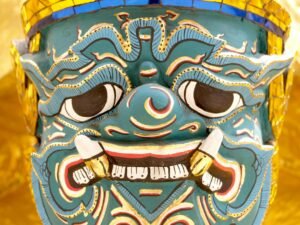Kička: Unraveling the Artistic Heritage
Kička a traditional art form rich in cultural heritage and artistic expression has captivated enthusiasts worldwide with its intricate patterns and vibrant colors. Originating from enter origin if available Kička holds a special place in various cultures transcending geographical boundaries and generations. In this article we delve into the enchanting world of Kička exploring its history techniques contemporary relevance and therapeutic benefits.
Introduction to Kička
What is Kička?
Kička also known as Ukrainian Easter egg decorating is a traditional craft that involves decorating eggs using a waxresist method. This ancient art form is deeply rooted in mention cultural significance.
The Artistry of Kička
Techniques and Styles
Kička artisans employ intricate techniques to create mesmerizing designs on eggs. The process typically involves applying layers of wax and dye to achieve intricate patterns and vibrant colors. Various styles of Kička exist each with its unique motifs and symbolism.
Materials Used in Kička
Traditional Kička utilizes natural materials such as beeswax dyes derived from plants and special tools like kistkas styluses for intricate detailing. Modern adaptations may incorporate synthetic dyes and electric kistkas for enhanced precision.
Evolution of Kička Over Time
Throughout history Kička has evolved adapting to changing cultural influences and technological advancements. While preserving traditional techniques contemporary Kička artists also experiment with innovative approaches keeping the art form dynamic and relevant.
Kička Around the World
Global Appreciation and Adoption
In recent years Kička has gained recognition beyond its cultural origins with enthusiasts worldwide embracing the craft. Workshops exhibitions and online communities contribute to the global appreciation and dissemination of Kička.
Variations in Different Cultures
While Kička is commonly associated with Ukrainian culture similar eggdecorating traditions exist in various cultures each with its unique customs and symbolism. Examples include mention other cultures and their variations.
Learning Kička: Tips and Tricks
Getting Started with Kička
For beginners eager to explore Kička starting with simple designs and acquiring basic techniques is recommended. Patience and practice are key to mastering this intricate art form.
Common Mistakes to Avoid
Novice Kička artists may encounter challenges such as wax leakage and uneven dye application. Learning from experienced practitioners and experimenting with different approaches can help overcome these hurdles.
Resources for Learning Kička
Numerous resources including books online tutorials and workshops are available for aspiring Kička enthusiasts. Joining local communities and attending classes provide valuable opportunities for handson learning and skill development.
Kička as a Therapeutic Practice
Benefits of Practicing Kička
Beyond its aesthetic appeal Kička offers therapeutic benefits serving as a mindful and meditative practice. The rhythmic process of wax application and dyeing promotes relaxation and stress relief.
StressRelief and Mindfulness
Engaging in Kička allows individuals to immerse themselves in the creative process fostering mindfulness and alleviating mental tension. The focused attention required for intricate detailing promotes a sense of calm and inner peace.
Kička in Modern Society
Contemporary Applications of Kička
In contemporary society Kička continues to thrive adapting to modern lifestyles and preferences. Artisans explore innovative ways to incorporate Kička motifs into various mediums including textiles ceramics and digital art.
Kička in the Digital Age
The advent of digital platforms has facilitated the dissemination of Kička enabling artists to showcase their work to a global audience through social media online galleries and virtual exhibitions. Digital tools also offer new avenues for experimentation and creativity in Kička design.
Preserving the Tradition of Kička
Efforts to Safeguard Kička Heritage
Amidst the rapid pace of globalization efforts are underway to preserve and promote the rich tradition of Kička. Organizations museums and cultural institutions collaborate to document and safeguard Kička heritage for future generations.
Importance of Passing Down the Art Form
As custodians of cultural heritage it is vital to pass down the art of Kička to younger generations. By sharing knowledge nurturing talent and fostering appreciation we ensure the continuity and vitality of this ancient craft.
Final Word
In Kička stands as a testament to human creativity and cultural diversity weaving together tradition and innovation in a vibrant tapestry of artistic expression. Whether practiced for its aesthetic beauty or therapeutic value Kička continues to inspire and enchant enthusiasts around the world inviting us to explore its timeless allure.
Unique FAQs
What makes Kička different from other forms of egg decorating?
Kička utilizes a waxresist method creating intricate patterns and vibrant colors that set it apart from other egg decorating techniques.
Can anyone learn Kička or does it require special skills?
While Kička requires patience and practice individuals of all skill levels can learn and enjoy the craft with dedication and perseverance.
Is Kička only practiced during Easter?
While Kička is commonly associated with Easter traditions it can be practiced yearround for various occasions and celebrations.
Are there specific symbols or motifs commonly used in Kička?
Yes Kička often features traditional symbols such as geometric patterns floral motifs and religious symbols each carrying symbolic meanings.
Where can I find authentic Kička artwork for purchase?
Authentic Kička artwork can be found in specialty shops artisan markets and online platforms specializing in traditional crafts.







